Brunei National Herbarium acts as depository for botanical specimens collected in the Sultanate
In the dedicated effort to uphold the vitality of the local wildlife and preserve biodiversity, numerous initiatives and centres have been established. Among them is the Brunei National Herbarium (BRUN) – nestling under the charming treetops of Kampong Sungai Liang.
Listed as BRUN in the international Index Herbariorum, and referred to as such in the profile of the Forestry Department of the Ministry of Primary Resources and Tourism, the herbarium plays a crucial role as the central hub for specimens collected within the Sultanate.
Compared to the conservation efforts of the Tropical Biodiversity Centre (TBC) and Ex-Situ Conservation, the BRUN holds a fundamental role in research.
While TBC focuses on showcasing the local tropical biodiversity and educating visitors through exhibitions, and the Ex-situ Conservation leans towards conservation and supporting local flora, the BRUN acts as a depository for the specimens.
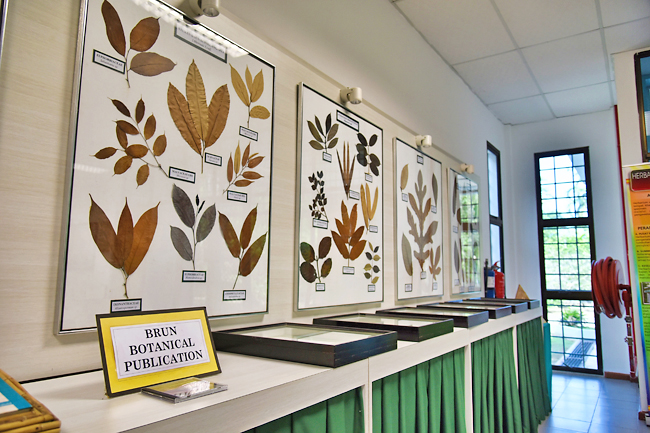
FOREST BOTANY BOOST
The evolution of BRUN can be traced back to 1935, taking root merely two years after the establishment of the Forestry Department itself.
In its nascent stages, the inventory primarily focused on commercial trees until the 1950s. It was during this period that a significant shift occurred, marked by the publication of two notable works – A Checklist of Brunei Trees by Hassan Pukol and PS Ashton, and Manual of Dipterocarp Trees by PS Ashton.
The substantial expansion of specimen collections gained momentum in 1987 with the establishment of the Forest Botany section.
Since then, the collection has consistently outgrown its previous locations, necessitating several relocations to accommodate the increasing storage demands.
The journey culminated in 1998 with the completion of BRUN’s own buildng, providing a permanent home for the collection in its current state.
BRUN stands tall among the 3,567 herbaria worldwide listed in the Index Herbariorum. The global directory houses a staggering 396 million botanical specimens, solidifying BRUN’s place in the broader botanical community.
Within BRUN’s confines lie approximately 47,000 botanical specimens, each meticulously gathered from the abundant rainforests and ecosystems of the nation.
To guarantee easy access for trained professionals, herbarium officers and staff diligently follow a series of steps to ensure the proper storage and recording of specimens.
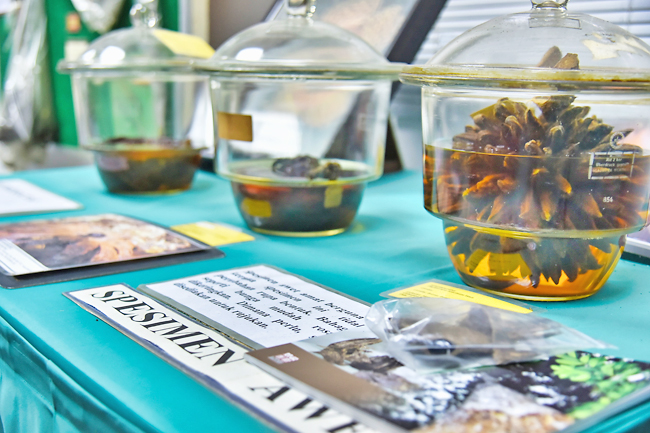
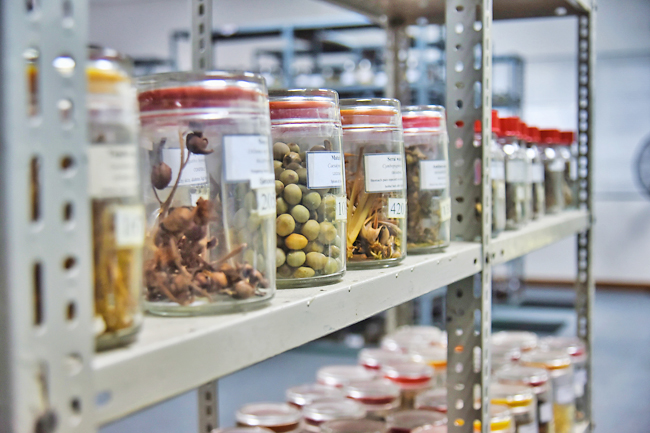
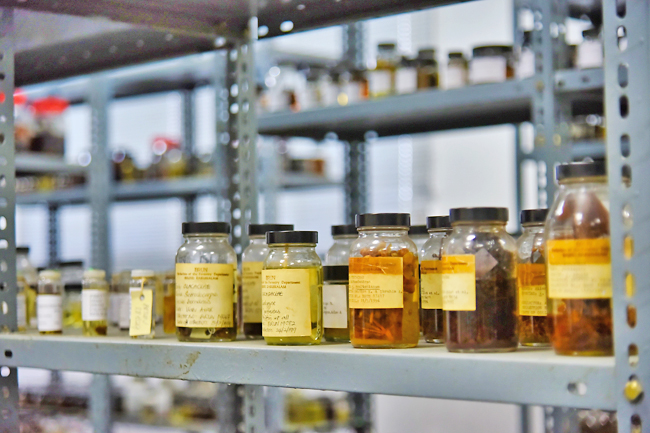
DETAILED DOCUMENTATION
It all commences in the heart of the rainforest, where officers and staff embark on ventures to gather a myriad of flora species. These specimens are then transported to the herbarium, where they undergo a meticulous process.
Initially, they are pressed and dried in an incubator, a procedure that typically spans three to seven days. Once dried, the specimens are duplicated, with a single collected sample yielding multiple copies sharing the same record.
This duplication serves as a crucial reference for researchers in different countries and safeguards against potential loss of the original specimen.
The accompanying records not only detail the local names and types of flora but also capture the precise time, date and coordinates of each collection site.
The comprehensive information provides researchers with a context when delving into the array of species housed in the herbarium.
Following a freezing period tailored to the specimen’s size, the herbarium officers and staff meticulously hand-sew and glue the specimens to ensure they adhere to the record labels.
Before securing a place in the herbarium archive, each specimen is categorised and recorded in the system, facilitating easy access for future researchers.
As a repository for local flora specimens, BRUN collaborates with other herbaria, such as those at Universiti Brunei Darussalam (UBD), in the pursuit of research and the systematic categorisation of the diverse species within the collection.
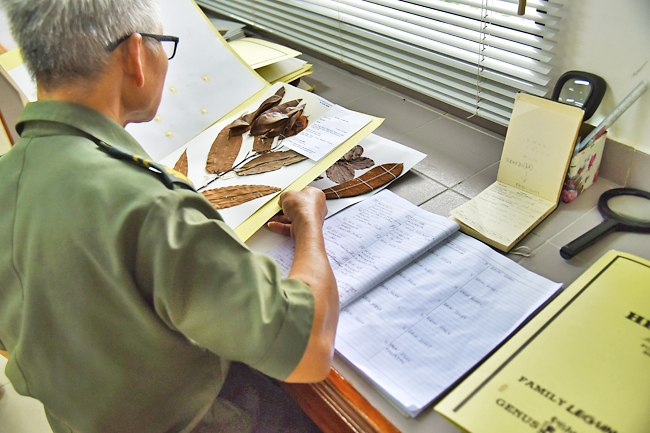
BOTANICAL GUARDIANS
In the face of global challenges like climate change, deforestation, and habitat loss, herbariums like BRUN have long served as repositories for the documented flora of Brunei – capturing both historical and contemporary botanical landscapes.
By delving into the rich botanical history, researchers gain valuable insights into the present state of local biodiversity.
This knowledge becomes a cornerstone for making informed decisions that shape the future, particularly in the context of environmental conservation.
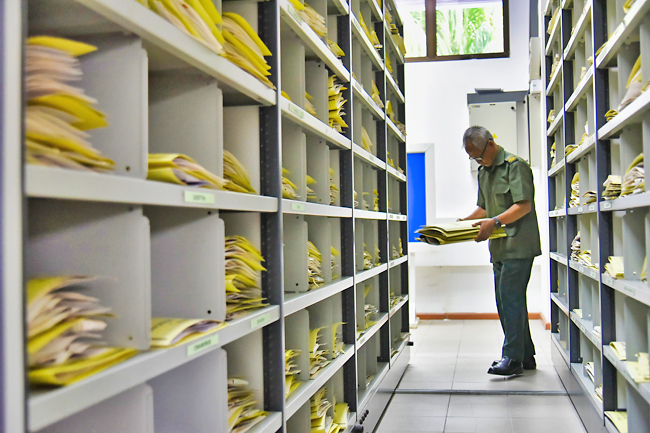
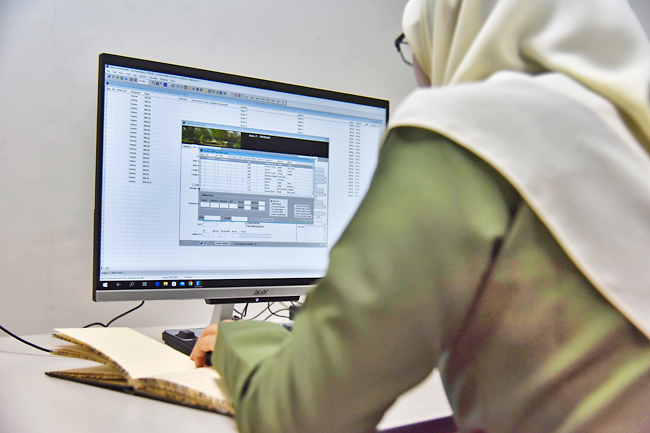
The commitment of the herbarium’s officers and staff is evident in their daily ritual of collecting and preserving the 47,000 specimens housed within.
Their dedicated work extends beyond the realm of researchers, reaching into the realms of education for the younger generation, offering a closer look at the flora that surrounds them.
BRUN stands as one of the many unsung guardians of nature’s wonders, not only preserving the aesthetic allure of our planet but also serving as an indispensable resource for researchers in the ongoing mission to educate, protect, and conserve the biodiversity that sustains life on Earth. – Daniel Lim




